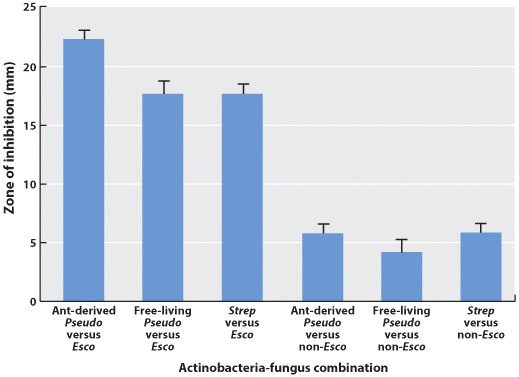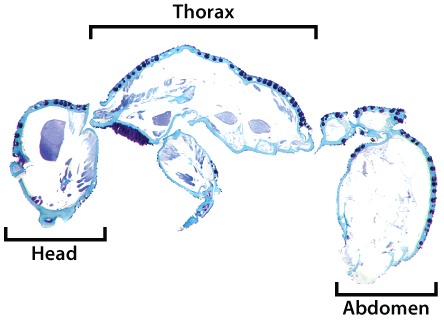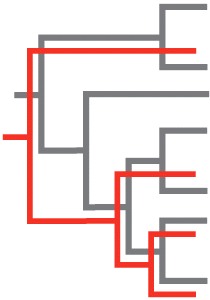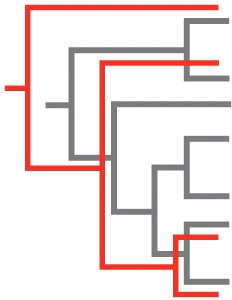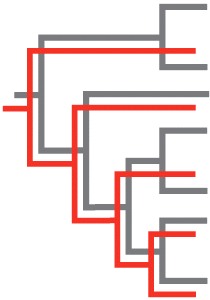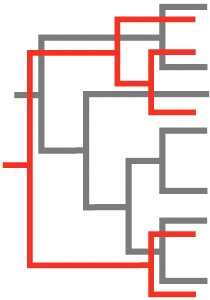Chapter 1. Mirror Experiment Activity 47.7
Mirror Experiment Activity 47.7
The experiment described below explored the same concepts as the one described in Figure 47.7 in the textbook. Read the description of the experiment and answer the questions below the description to practice interpreting data and understanding experimental design.
Mirror Experiment activities practice skills described in the brief Experiment and Data Analysis Primers, which can be found by clicking on the “Resources” button on the upper right of your LaunchPad homepage. Certain questions in this activity draw on concepts described in the Experimental Design primer. Click on the “Key Terms” buttons to see definitions of terms used in the question, and click on the “Primer Section” button to pull up a relevant section from the primer.
Experiment
Background
You may be familiar with leaf-cutter ants, which cut pieces from leaves and use these fragments as bases on which they “farm” certain fungal species. This is an example of a mutualism: the ants are provided with food in the form of the fungus, and the fungus receives nutrients (derived from leaf pieces) in the ant nest. Leaf-cutter ants are actually one species of a much larger group of ants that grow fungus - the Attine ants. Fungus-ant interactions are well-studied examples of coevolution, but do Attine ants share mutualisms with other (non-fungal) species? Is it possible for an organism to coevolve with multiple species depending on selective pressures?
Hypothesis
The fungus grown by Attine ants can be infected by parasitic Escovopsis fungus. Much like a farmer’s wheat crop can be ruined by the presence of rust fungi (recall Chapter 34), so too can infection by Escovopsis ruin the fungal “crops” of Attine ants. Matías Cafaro and his colleagues (along with other research groups) noticed that many species of Attine ants have visible bacterial colonies growing on their exoskeletons. Since certain types of gram-positive bacteria (i.e., Streptomycetes) can synthesize antifungal compounds, Cafaro et al. hypothesized that Attine ants are in a mutualistic relationship with bacteria that can produce compounds toxic to Escovopsis. Researchers also predicted that the phylogenetic trees of Attine ants and their bacteria would be similar, indicating that these organisms coevolved.
Experiment
Cafaro and colleagues collected different species of Attine ants and isolated bacteria from their exoskeletons. Escovopsis fungus was introduced onto petri dishes containing colonies of ant-derived bacteria, and researchers evaluated whether Escovopsis could grow on these dishes. Scientists also sequenced two genes in Attine ant bacteria - an rRNA-encoding gene and the tuf gene (involved in translation). They used these sequences to identify the species of bacteria carried by Attine ants, and create a bacterial phylogenetic tree (Figure 1). The phylogenetic trees of Attine ants (determined by previous studies of these ants) and their associated bacteria were then compared.
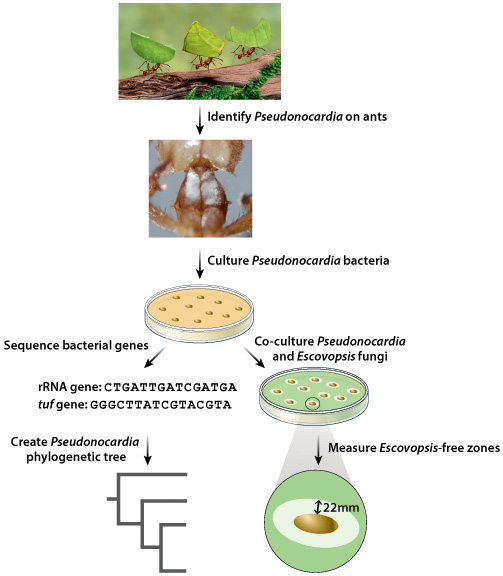
Photo credits: Gail Shumway/Getty Images, Carafo, M.J., et al., Proc Biol Sci. 278 (2010). Specificity in the symbiotic association between fungus-growing ants and protective Pseudonocardia bacteria.
Results
Cafaro and colleagues determined that most Attine ants carry Pseudonocardia bacteria, which belong to the same bacterial order as Streptomycetes (i.e., Streptomyces). When researchers compared their Pseudonocardia phylogenetic tree to that of Attine ants, they noted that these two trees appeared very similar; certain groups of Pseudonocardia bacteria always appear to associate with certain groups of Attine ants. Furthermore, when Escovopsis fungus was plated on petri dishes containing Attine ant-derived Pseudonocardia, “Escovopsis-free” regions were observed surrounding bacterial colonies. This suggested that Pseudonocardia bacteria could produce antifungal compounds. Collectively, these results indicated that a mutualism exists between Attine ants and Pseudonocardia bacteria, and that these organisms coevolved.
Source
Currie, C. R., et al., 2006. Coevolved crypts and exocrine glands support mutualistic bacteria in fungus-growing ants. Science. 311, 81-3.
Cafaro, M. J., et al., 2010. Specificity in the symbiotic association between fungus-growing ants and protective Pseudonocardia bacteria. Proc Biol Sci. 278, 1814-22.
Question
Even before the work of Cafaro and colleagues, researchers hypothesized that the interaction between Attine ants and Pseudonocardia bacteria was an example of a mutualism. You may recall that mutualisms fall into two categories: facultative mutualisms, where at least one of the interacting species does not require the other to survive; and obligate mutualisms, where at least one of the interacting species would die without the other. How could researchers determine if the mutualism between Attine ants and Pseudonocardia bacteria is facultative or obligate?
| A. |
| B. |
| C. |
| D. |
| E. |
Experimental Design
Testing Hypotheses: Variables
When performing experiments, researchers manipulate the test group differently from the control groups. This difference is known as a variable. There are two types of variables. An independent variable is the manipulation performed on the test group by the researchers. It is considered “independent” because the researchers could choose any variable they wish. The dependent variable is the effect that is being measured. It is considered “dependent” because the expectation is that it depends on the variable that was changed. In our example of the headache medicine, the independent variable is the type of medicine (new medicine, no medicine, placebo, or medicine known to be effective). The dependent variable is the presence or absence of headache following treatment.
In designing experiments, there is an additional issue to consider: the size of each of our groups. In order to draw conclusions from our data, we need to make sure that our results are valid and reproducible, and not merely the result of chance. One way to minimize the effect of chance is to include a large number of patients in each group. How many? The sample size is the number of independent data points and is determined based on probability and statistics, the subject of the next primer.
